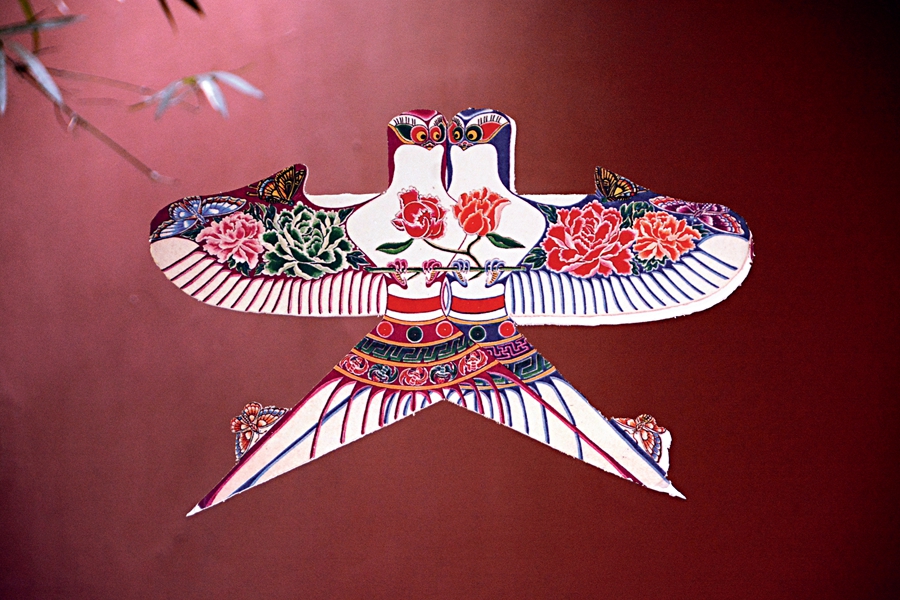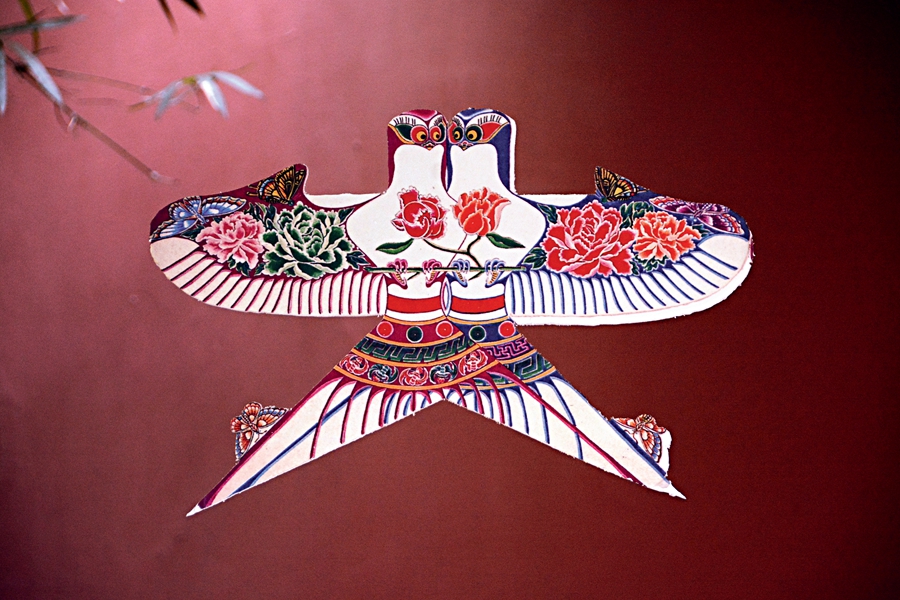The Earliest “Aircraft”
China Today,April 20, 2018 Adjust font size:
Kite flying originated in China and became popular around the country. With a long history, it is reputed as the earliest aircraft. In China, the kite is known as zhiyuan (literally meaning paper eagles), as kites were normally made of paper and when they fly, they are like eagles. Kites were used for military purposes in the very beginning, such as measurement and signaling. Later kite flying gradually became a popular recreational activity. In the past, people fastened bamboo-made whistles onto a kite. While flying through the wind, it produced sound like the music produced by guzheng, a traditional Chinese musical instrument that is also known as the Chinese zither. Therefore, it has its modern name as fengzheng (feng means wind and zheng refers to guzheng). In the 7th century, kite was introduced to neighboring countries including Korea and Japan. Around the 13th century it was introduced by Marco Polo to Europe, and then it arrived in America and Australia via Europe and Arab countries.
The Traditional Chinese Philosophy Implied
A traditional Chinese kite is made of materials such as silk fabric, bamboo chips, and paper, with the help of tools including a scissor, a bottle of liquid glue, an alcohol lamp, ink brushes, and paints. The raw materials are simple, but the kite-making process is complicated. It demands high craftsmanship to make a beautiful and easy-to-fly kite.
The representative design of Beijing kites is the swallow-shaped kite.
The traditional Chinese kite also embodies harmony between human and nature, reflecting the Chinese philosophy, as well as Chinese people’s aesthetic understanding and preference.
The integration between heaven and humanity is one important traditional Chinese philosophical concept, which refers to the harmonious coexistence between humanity and nature. The spring is the season that sees growth and resurgence of all living things under warm and sunny weather. After the long cold winter, people need to go out to enjoy the balmy breeze. Then kite flying became people’s favorite activity. In summer, people rest more to avoid the scorching heat. Autumn is the season for harvest. People are busy with harvesting and enjoying mellow fruits. Winter features freezing and windy weather; therefore, it is not suitable for outdoor activities. The Chinese ancients followed the rules of nature in their daily lives.
Around the Qingming Festival (also known as Tomb-Sweeping Day), which usually falls on early April, many people fly kites in public squares, on roadsides, and along rivers. The sky is dotted with kites of different designs, such as dancing butterflies, soaring eagles, bounding dragons, and swimming fish. When people look at those kites, they feel as if they are flying away with the kites to escape the world of hustle and bustle and integrate into the nature with their body and soul.
Kite-making is a delicate craftsmanship. A traditional Chinese kite features a symmetrical structure, with the bridle fastened in the central area of the frame. The frame should be made of both hard and soft materials to help the kite keep a balance when facing the change of wind direction and power. All the characteristics of a Chinese kite correspond to the traditional Chinese philosophy implied in the Doctrine of the Mean, which emphasizes maintaining unbiased, peaceful, and balanced existence. The Doctrine of the Mean reflects the essence of Confucianism. It suggests that people should be neither tamed nor too obstinate and rebellious, but should achieve a certain balance in dealing with their lives. To live a life resembles to fly a kite. The string should be held neither too tight, or it can’t fly, nor too loose, or it will be out of control. A balance should be achieved so that the kite can fly high and stably.
Traditional designs of Chinese kites reflect Chinese people’s aesthetic preferences. The patterns often emulate both real and mythical auspicious birds and beasts, such as dragon, phoenix, butterfly, and swallow. Sometimes people write down the names of their family members on kites. When the kites fly high in the sky, they cut the string and let the kites fly away. It is said that doing so can eliminate the problems and diseases of the past winter, which will be sent away by the kites. It is a way for people to pray for blessings and good luck.


